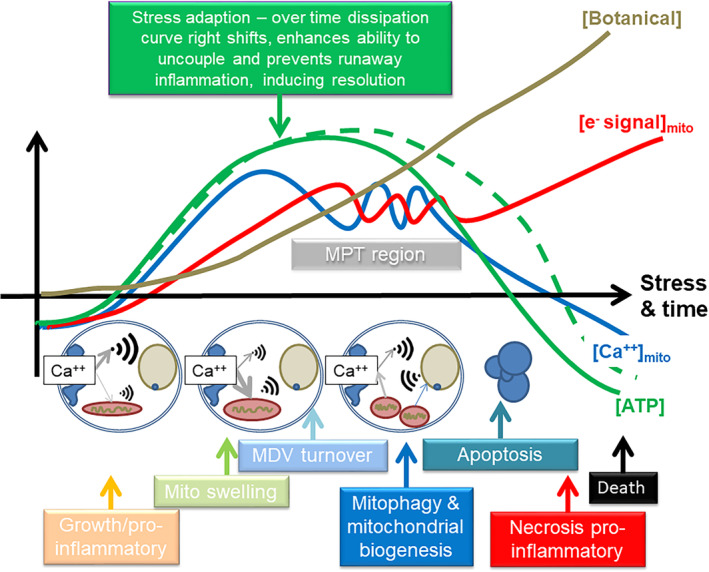Figure 3.

Biphasic effects of plant compounds on mitochondrial function. This diagram shows a calcium‐centric viewpoint. It is possible that plant compounds were originally sunscreen/electron dissipaters, but through evolution, became part of a broader stress response system that both directly and indirectly modulated mitochondrial function. Flow of calcium into a mitochondrion would stimulate function, but would also eventually inhibit function, and would provide a powerful internal mitochondrial signal to renew damaged complexes, as well as a retrograde signal to the nucleus and other parts of the cell (e.g.,mitochondrial biogenesis and autophagy, and upregulation of anti‐oxidant pathways). This could be achieved in a number of ways, both via modulation of calcium channels in the plasma and ER membranes, as well on the mitochondrion itself – many of these compounds are both lipophilic and could take part in redox. They could also directly influence the ETC, as well as potentially the ATPase, which could fine tune the signalling process – so modulating ROS and uncoupling. The dose would be critical, and it is likely that the system evolved where low doses would start by “priming” the system, possibly by activating redox sensitive growth pathways that inhibit cell death, but as dose increased, they would inhibit this process to ensure enhanced turnover and over‐compensation of capacity to ensure resolution. At still higher concentrations, they would be capable of inducing cell death, both of self‐cells, but also of pathogens. It is also possible, depending on where they end up, and depending on the type of molecule and wavelength, absorb light and provide some protection against UV. Key: MPT = mitochondrial permeability transition; MDV = mitochondrially derived vesicles; blue line = mitochondrial calcium concentration; red line = electron leak leading to ROS; green line = dissipation & ATP; brown line = possible plant compound concentration
